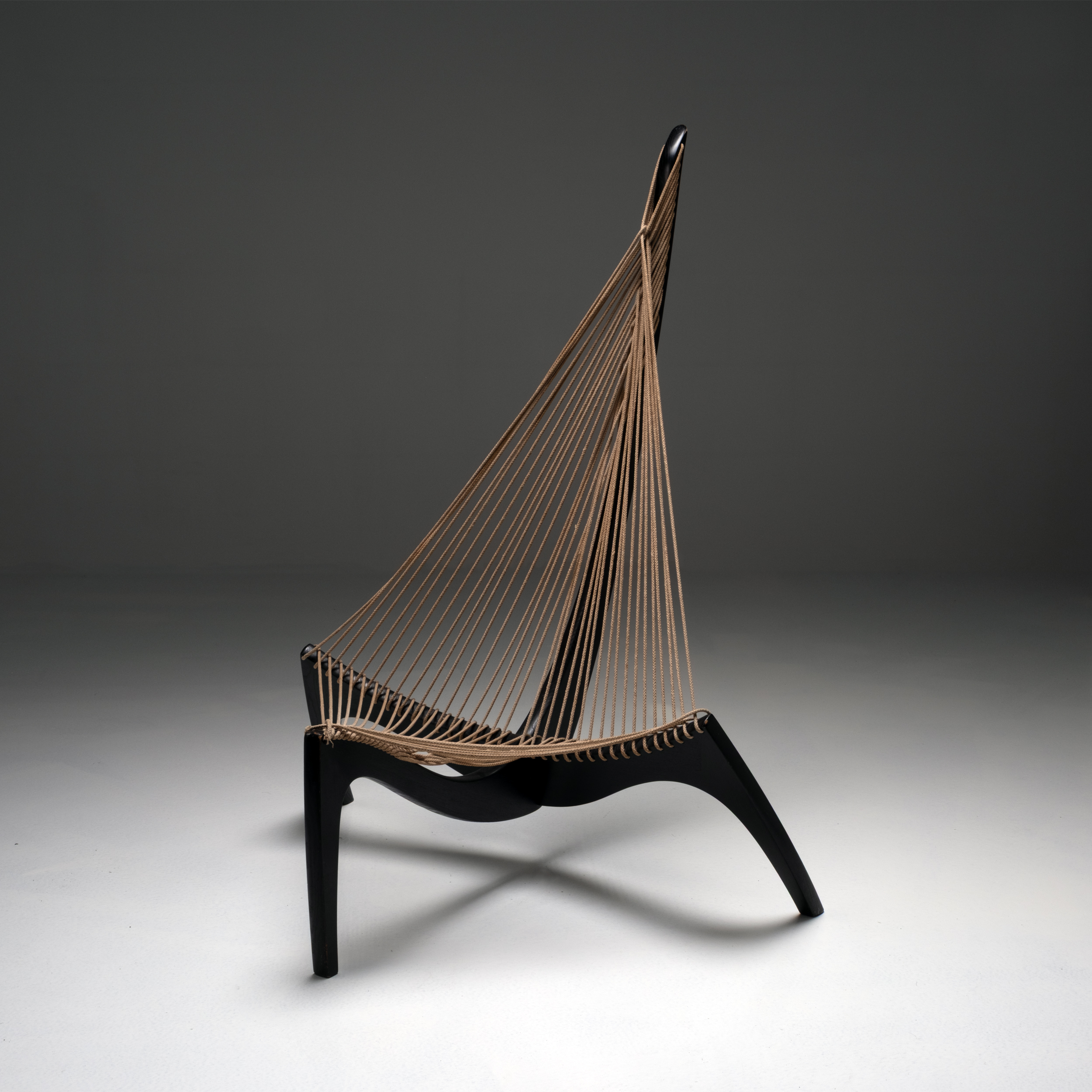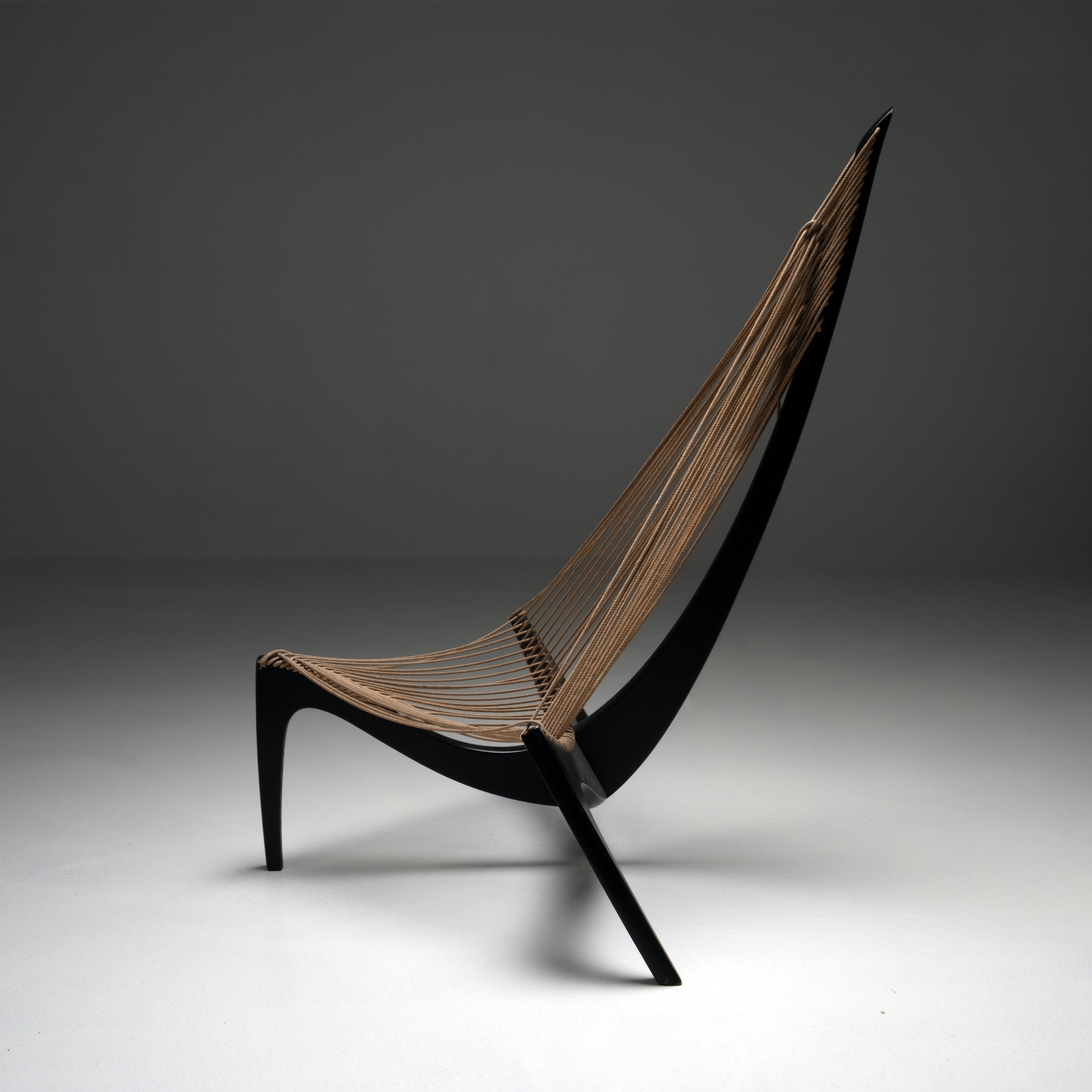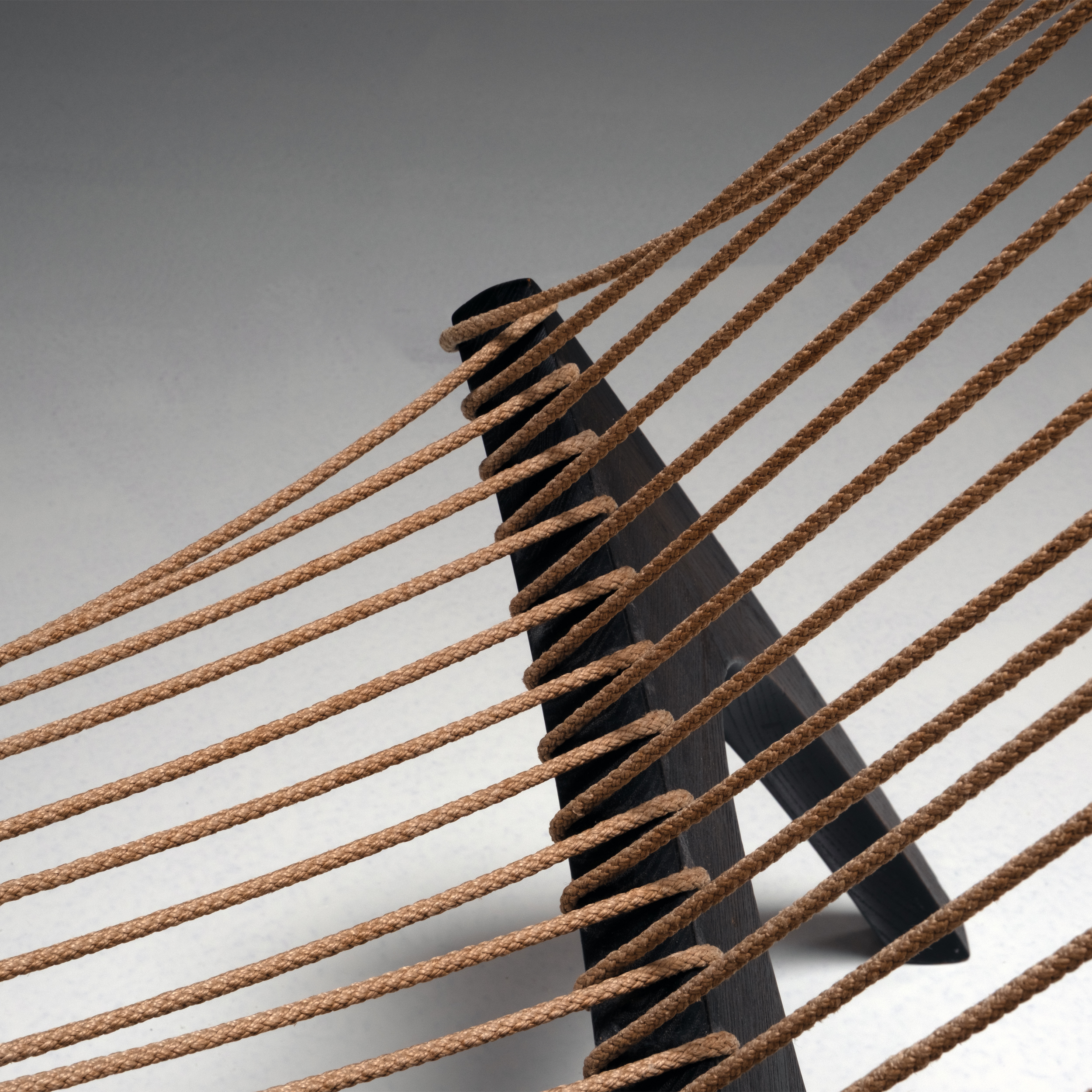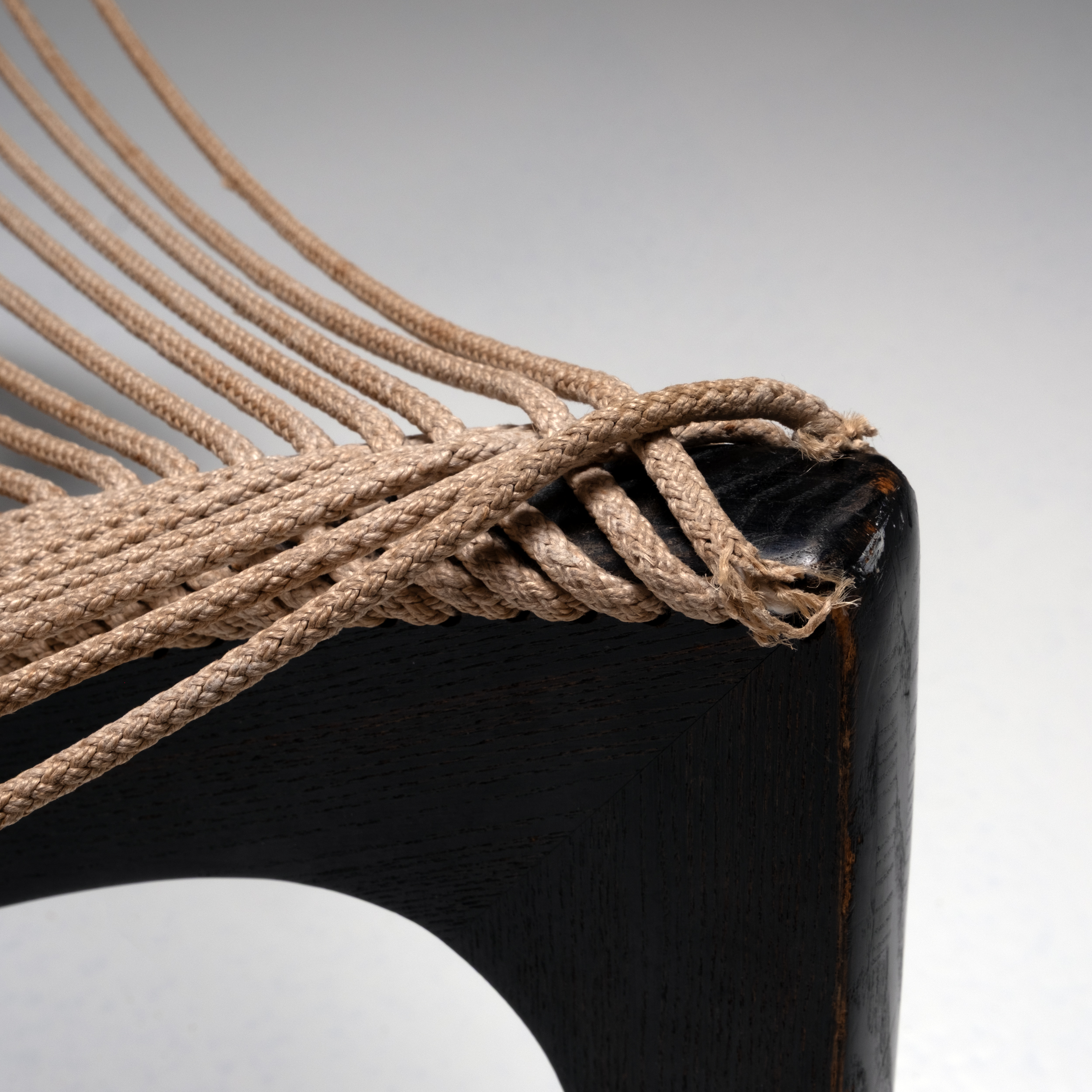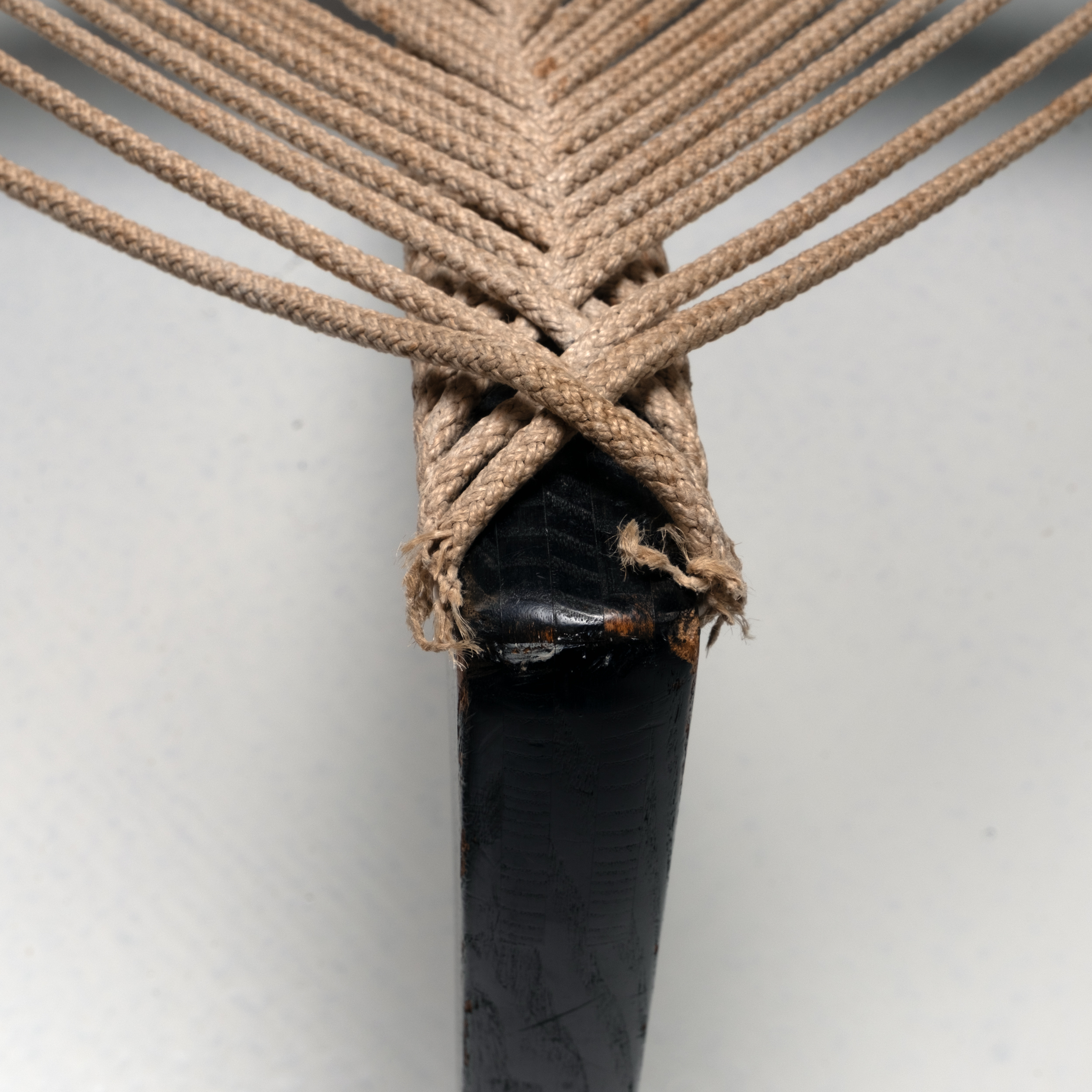The “Harp” Chair by Jørgen Høvelskov
Jørgen Høvelskov
Design: 1963 | Manufactured: 1960s
Designed in 1963 by Jørgen Høvelskov, the “Harp” Chair is one of the most striking examples of Danish modernism, a design where structure becomes sculpture. Inspired by a Viking ship and the elegant tension of a harp’s strings, the chair’s dramatic form captures the essence of movement and balance.
Its solid stained ash frame contrasts beautifully with the hand-strung flag halyard, creating both visual rhythm and ergonomic support. Every angle of the chair reveals a different character, from the sweeping arch of the backrest to the dynamic silhouette that feels almost suspended in the air.
The Harp Chair embodies the Danish mastery of combining craft, comfort, and art. Equally at home as a functional seat or as a sculptural centerpiece, it remains a timeless icon of 1960s design, bold, graceful, and undeniably modern.
Condition
The chair is in completely original condition, with no restorations. Both the cord and the wooden frame display a beautiful, authentic patina consistent with its age. Please note the traces of use on the cord. Price is as is. Renovation of the flag halyard is possible, please contact us.Dimensions
W106 x D100 x H131 cm | Seat height 27 cmOrigin
DenmarkMaterial
Stained Ash, Flag HalyardAbout the designer
Jørgen Høvelskov
Jørgen Høvelskov (1935–2021) was a Danish furniture designer best known for his sculptural and expressive approach to form. A graduate of the Danish School of Arts and Crafts, he was deeply influenced by the organic modernism that defined postwar Scandinavian design. His work stands out for its architectural balance and the way it transforms functional furniture into artistic statement pieces.
Høvelskov achieved international recognition with his Harp Chair (1963), a striking composition of tension, craftsmanship, and geometry. Inspired by the shape of a Viking ship, the chair embodies the Danish mastery of combining natural materials with bold, minimalist structure. His designs remain celebrated for their poetic tension between tradition and modernity, craftsmanship and innovation.

